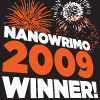I’m not a baseball fan. In fact, you could say I am the exact opposite. If you wanted to somehow put me to sleep, stick me in front of a TV with a baseball game on. I’m more of a soccer, basketball, Olympics girl. Fast. Aggressive. High-scoring. That’s how I like my sports.
However, I read an inordinate number of baseball books because I teach in a baseball town. Every year, at least half of my boys are baseball players. They love to read books about baseball, baseball players, and baseball history. So this past year I read (and loved) Alan Gratz’s The Brooklyn Nine. At the end of the book, Gratz includes an afterword with historical information pertaining to each story in the book. It was there that I learned there have only been 17 perfect games in MLB history.
Today, I opened my computer to read the headline Buehrle tosses first MLB perfect game in 5 years. Before I read the article, I immediately thought to myself, “Wow! Now there have been 18 perfect games! How cool would it be to actually pitch one of those 18 games in the last 100 years?” Not exactly what you’d expect from someone who has never watched an entire baseball game all the way through, huh? More importantly, not what you would expect from the the girl who spent the one season she played softball making daisy chains in the outfield.
Before reading Gratz’s book I never would have known this information. I probably would not have even clicked on the link and read the article. But because I read The Brooklyn Nine I was interested in the story. Reading that book led me to read the article from Sports Illustrated today. And now I know that there have only been 5 pitchers in MLB history to throw a perfect game and a no-hitter. Isn’t that exactly what we want our students to do? Read, build schema, and then go out to read and learn more?
And this can happen with any book. I’ve seen students go out and research synesthesia after reading Wendy Mass’s A Mango-Shaped Space. Students who read Cryptid Hunters read non-fiction about cryptozoology. So on and so forth.
There are no bad books. Sometimes I have parents who think that sports books are a waste of time. Or horror. Or humorous books. Or magazines. It goes one and on. But here’s the magic of reading: fiction leads to reading more non-fiction-whether it is non-fiction books, articles on the internet, magazines, or any other informational reading on a specific subject. It’s just as likely that readers of non-fiction will seek out fiction books on similar subjects, or more informational texts (in a variety of genres) about the same subject. Reading begets more reading. There’s no more organic way to get kids to read than to just allow them to read what they want and to continue reading what they enjoy!
Even better? All that reading builds up background knowledge and schema. Students with more schema do better on standardized testing because they have the necessary background knowledge. More importantly, students with a large array of schema will connect to more books, more subjects in school, more teachers, and more people. They are more well-rounded..
Filed under: 21st Century Literacies, reading, reading research | Tagged: perfect game, reading in middle school, schema, what i learned from reading |





After I read Every Soul a Star, I was doing a constellation program with a coworker and I found myself describing to him how astronomers use red-tinted flashlights so they don’t wreck their night vision. 🙂
Amen!
And some people say reading blogs is a waste of time, but now I know more about baseball than I did two minutes ago! I am more well rounded.
I think this is a great post, Sarah. An excellent example of the way that a love of books repays the reader, time and time again.